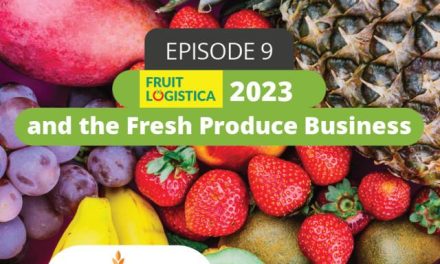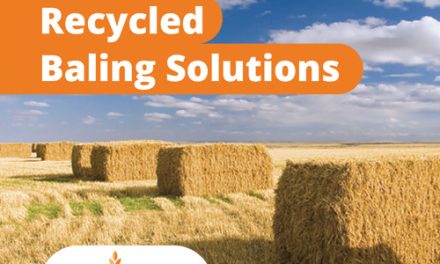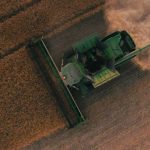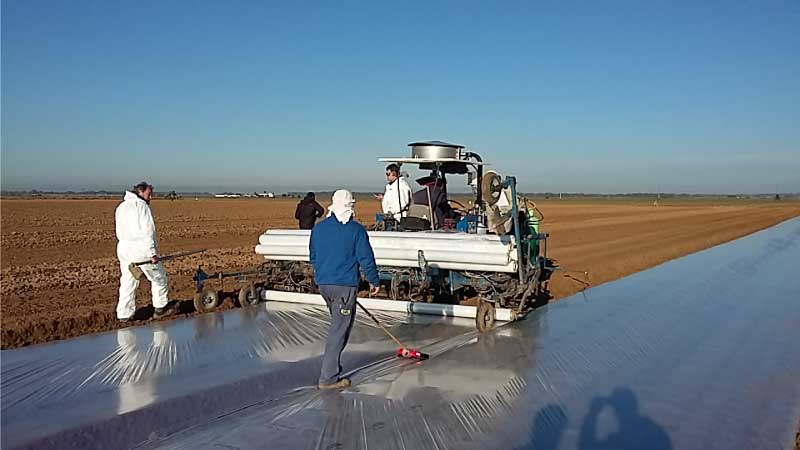
Soil treatment methods for agriculture
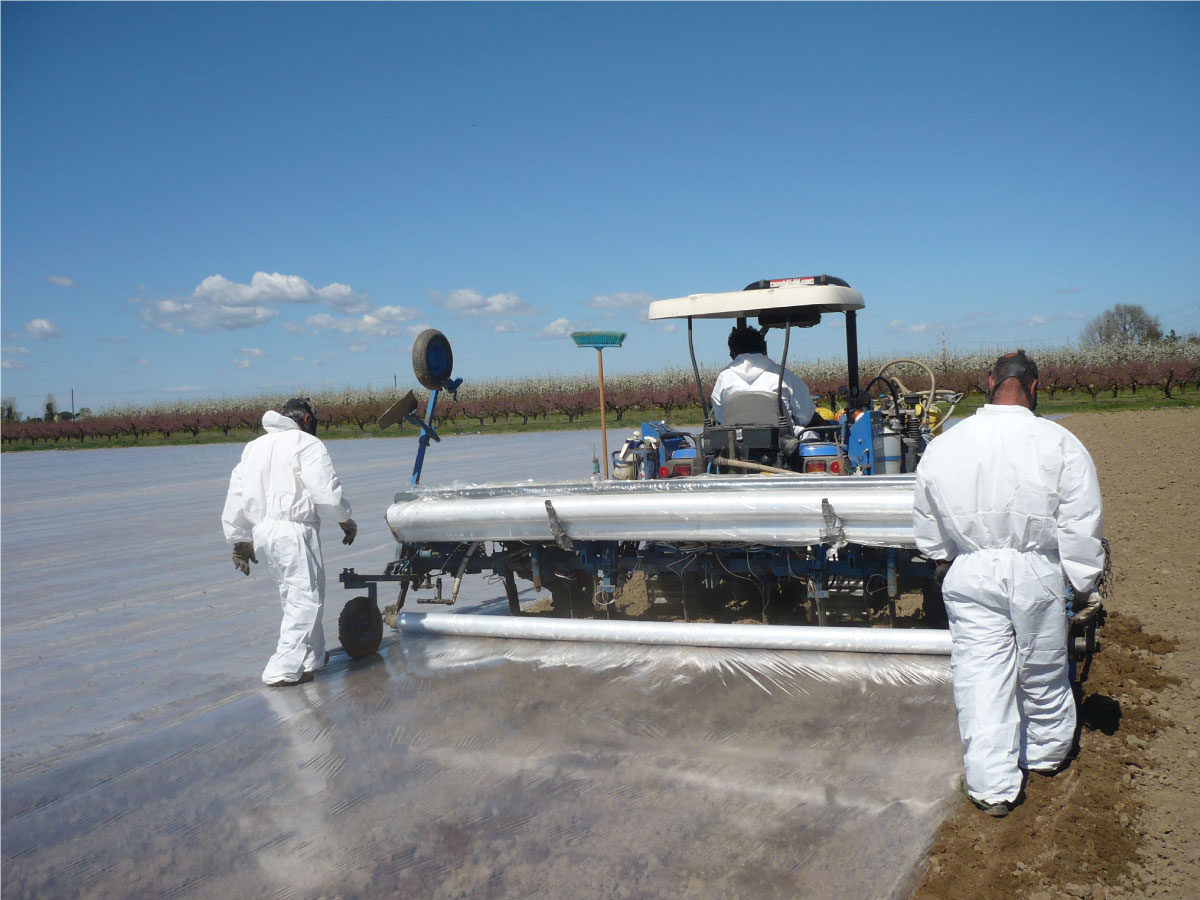
One of the most frequent topics of conversation in the agricultural world is how to enhance farmland to make it increasingly productive. Therefore, we want to dedicate this post to the use of plastics as one of the most beneficial soil treatment methods for agriculture and its productivity.
Why is the use of plastic films so popular in soil treatment methods for agriculture?
Because they help to enhance crop quality and improve efficiency in the disinfection of agricultural land. They also help optimize the quantity or proportion of chemicals used, which, in turn, translates into great benefits for the environment.
Nowadays, more companies are focusing on producing plastics that improve crop quality and reduce excessive use of resources such as water.
Farmers around the world know that when they use plastics, whether for greenhouse structures, covers, mulching, or other purposes, they achieve larger, juicier, sweeter, and better-colored crops of fruits, for example, just to mention a few characteristics.
Why is it important to have healthy croplands?
As it is generally known, intensive agriculture brings with it some complications with the land for cultivation, either due to the wear and tear of the agricultural process or because of the presence of diseases or pathogens in the soil.
To solve these complications, there are diverse methods of soil treatment for agriculture that can be implemented, based on the needs of the land, to keep it healthier, thus ensuring its fertility and profitability over time.
The FAO (Food and Agriculture Organization of the United Nations) describes the five benefits of healthy soils:
- They are the basis for the production of healthy food
- They are home to a quarter of our planet’s biodiversity
- Soils help combat and adapt to climate change
- They are essential for food security
- They store and filter water
In this regard, we recommend you read our posts on cover crops to keep soils healthy and how to prepare the soil for harvest.
Main challenges of soils in intensive agriculture:
Challenges often emerge when soils are used for intensive agriculture. Some of them are moisture loss, which can be easily corrected through the use of highly adaptable irrigation systems.
Another challenge can be the loss of nutrients due to the repetitive planting and harvesting cycle, which can also be addressed thanks to all the technology involved in modern horticulture, including fertigation and foliar application of nutrients, to name a few.
There is also an imbalance in organic matter, which can be corrected through the contribution of organic matter. Likewise, the emergence of pathologies derived from monoculture and the constant exploitation of the soil can be corrected or minimized through different soil treatment methods, as well as the use of plastics.
Examples of soil treatment methods for agriculture:
Today, growers have a variety of methods they can apply to treat their cropland, such as chemical alternatives (CSD), solarization (SOL), and biofumigation or ASD, which we will explain below.
According to information provided by Javier Pery, Product Manager of the Mulch Division of Armando Alvarez Group, these chemical alternatives have been transformed over time, so it is advisable to analyze their history.
- The 1970s. Methyl Bromide was the most widely used chemical for disinfection, especially for pest, disease, and weed control.
Methyl bromide was commonly used in some countries for the fumigation of durable products, such as grains and nuts at the post-harvest stage, as well as for disinfecting warehouses, mills, and wooden pallets.
- The 1990s. Due to the Copenhagen Amendment, adopted by the Parties to the Montreal Protocol in 1992, Methyl Bromide was considered a substance responsible for depleting the ozone layer.
From that moment on, a gradual process of withdrawal of the product from the market began, which resulted in its total elimination in most countries as an element for the treatment of crops, soils, or fumigating structures.
- The 2000s. Methyl Bromide was officially eliminated as an element of crop treatment or disinfection of structures and, instead, alternatives such as chemical soil disinfection (CSD) and integrated pest management (IPM) emerged. Within the latter, we find two types: soil solarization (SOL) and biofumigation or anaerobic soil disinfection (ASD).
There are currently two global trends in terms of chemical soil treatments:
- The total ban of disinfectants that are proven or suspected to be toxic.
- Regulation for the application of the CSD method.
-
Chemical Alternatives (CSD):
Due to the banning of Methyl Bromide, the need to reinvent the market and look for a new alternative that could replicate its efficiency rate to eliminate all pathogens in the soil while maintaining the low costs associated with soil disinfection came to the forefront.
Thus, a solution appeared that involved the use of commercially available chemicals such as Dazomet, Metam Sodium, Metam Potassium, Chloropicrin, Dichloropropene, the mixture of Chloropicrin and Dichloropropene, Dimethyl Disulfide, and EDN Fumigas.
Since each country has its specific legislation, agricultural producers must be fully informed about the same before approaching the use of any alternative disinfection or chemical soil treatment (CSD), since some substances are regulated, others are in the process of registration, and others are prohibited.
-
Solarization (SOL):
Soil treatment by solarization is ecological disinfection that consists of using only water and sunlight.
Its objective is to trap heat from the sun’s rays under a transparent plastic film. This film is placed over the moist soil, which increases the soil’s temperature levels to levels that are lethal for pests and pathogens while maintaining the biological balance at the same time.
When using this method, it’s important to use a polyethylene (PE) based plastic specifically formulated for the following objectives:
- Facilitate the increase of soil temperature up to 60% of the temperature obtained with a regular plastic film.
- Increase the efficiency of solarization by up to 97% while ensuring pathogen mortality
- Significantly shorten the time needed for solarization to achieve optimal results in up to 3 weeks
- Reduce the condensation (drip) effect, allowing better use of solar radiation
- Preserve organisms that are beneficial to crops
-
Biofumigation or ASD (Anaerobic Soil Disinfection):
Soil treatment by biofumigation or ASD consists of the use of organic matter in the absence of oxygen to achieve disinfection.
Although some farmers consider it a relatively new technique, experiments with these anaerobic soil disinfection treatments have been performed for a long time.
Its objective is the accumulation of toxic or pathogen-suppressing substances in the soil through anaerobic decomposition in the absence of oxygen.
What is achieved with Biofumigation or ASD:
- Biological control by anaerobic microorganisms
- Lowering of soil pH
- Low or no oxygen level
- The generation of iron and manganese ions
The principle of this technique is very simple to achieve by following these requirements:
- Organic matter (OM) is needed where there is a balance of carbon and nitrogen.
- Cover the soil with a specific film that is impermeable to oxygen or TIF (Totally Impermeable Film)
- Irrigate to maximum soil capacity or saturation
The role of Polyethylene or standard (PE), Virtually Impermeable Film (VIF), and Totally Impermeable Film (TIF) plastics in different soil treatments
To discuss the role of plastics in soil treatments, it is also important to talk about the evolution of these films.
According to Javier Pery, in the past, agricultural film technology allowed the manufacturing of plastics with up to three layers. Therefore, treatments were usually made using standard low-density polyethylene films.
As Pery comments, these plastics were transparent, and the impermeability was very low. However, the mechanical properties were very good. But when trying to increase the barrier properties in this type of three-layer film with adhesive layers of low-density polyethylene and polyamide, the mechanical properties decreased.
While these three-layer films with improved barrier properties were sort of an improved version of the earlier ones, they were not as good as the EVOH (ethylene vinyl alcohol) film that was later introduced in barrier plastics.
These EVOH films require five-layer and seven-layer technology. This technology also makes it possible to produce plastics with excellent barrier and mechanical properties.
The following graph summarizes the evolution of barrier films thanks to the use of technology in their manufacture:
In this graph, you can also easily see the difference in composition of a standard plastic, a VIF, or a TIF.
Few manufacturers currently have the technology to produce 7-layer plastics, one of them is Armando Alvarez Group.
Some facts about barrier films
Certainly, the approval of the European Standard EN17098 to differentiate the composition between TIF and VIF films was a milestone in terms of the technologies for mulching plastic films, as well as the methods for determining gas permeability using a dual-chamber instrument.
According to Maribel Hernández, Sales Representative of Armando Alvarez Group, in the past there were no standards. For this reason, it was difficult to define what was a virtually impermeable film (VIF) vs. a totally impermeable film (TIF).
Article 5.1 of this European Standard states that the difference is that a “Virtually Impermeable Film” (VIF) contains polyamide, and a “Totally Impermeable Film” (TIF) contains EVOH, which is ethylene vinyl alcohol.
The standard also includes the test methods for measuring the permeability of different chemicals with plastics and all the conditions that need to be in place to verify this permeability.
An important aspect to consider about these tests is that they are used to determine permeability by measuring the oxygen transmission rate (OTR) or Mass Transfer Coefficient, which is the quantity/amount of chemicals passing through the film.
“To give you an idea, EVOH or a TIF retains a thousand times more gases than regular mulch. This is certainly something important because imagine you turn on the heat, but you open the doors and windows when you are applying a chemical… this is what happens when you use a normal mulch, in this case, you are letting the gases out. On the other hand, when you use a TIF, the scenario is different because it is like turning on the heat but closing the doors and windows to keep the heat inside,” says Hernandez.
In conclusion, the main measures to determine the permeability related to different disinfection gases are:
- Mass transfer coefficient or MTC (g/m2/24h).
- Oxygen transmission rate (OTR).
How to use these films to perform soil treatments
First, it is important to clarify that there are two types of formulations used in soil treatments. The European Standard classifies these two types of applications:
- Broadcast or full field spraying. EN 17098 Class 1
- Bed fumigation or bed spraying. EN 17098 Class 2
In the case of broadcast or full field spraying, a film is used exclusively for protective purposes. This film is placed during the spraying process and is removed before planting.
A transparent film is usually used for this type of application, as it helps to regulate the heat of the soil, which is essential for the proper functioning of the chemicals in the soil that must be at an optimum temperature range.
In the case of bed fumigation or bed spraying application, a film should be used to provide protection as well as mulch functions. These films are placed during the spraying process and remain in place afterward as mulch films.
Once the disinfection is done, small holes are made in the plastic based on the density of the plants, so the gases are released and then the TIF film is used as a regular mulch.
This application using a plastic TIF as a normal mulch has many advantages. One of them is the cost savings for the end user, as well as saving when it comes to the installation cost of a TIF and a normal mulch.
They are commonly used, for example, in strawberry crops, as they are often planted through beds.
The advantages of the use of plastics that perform protective and mulching functions simultaneously are the same as those of a standard mulch:
- They improve soil moisture, as the film prevents water evaporation.
- They improve soil fertility and soil structure since constant humidity also improves the development of the lateral surface roots of the plants.
- They improve product quality by preventing direct crop contact with the soil, which is especially useful in the case of creeping crops such as strawberries.
- They prevent weed growth, mainly with the black film that cuts off the light and prevents weed growth underneath.
- They regulate and balance soil temperature, depending on the color of the TIF film used and the needs of the soil. For example, with a transparent film, light transmission is achieved, and therefore the soil temperature is raised, which is very useful for early transplanting. With black/white films you can reduce the temperature, as the white side will reflect the light and reduce the temperature underneath.
In the case of silver/black films, these also reduce light, but to a lesser degree than white, so it reflects light almost 50-60% less than white films but has an anti-insect effect that improves soil fertility with humidity and temperature that favors soil nitrification. This means that the plant can absorb nitrogen and all nutrients easily, thanks to the conditions generated by the mulch.
Why use TIF plastics?
Generally speaking, one of the best reasons to use this type of TIF plastic film as one of the soil treatment methods for agriculture is because they allow significant optimization of the amount of fumigant used on crops compared to a standard PE.
By optimizing the amount of fumigant used, biocidal efficacy against all soil pathogens is increased.
It also reduces gas emissions into the atmosphere and, of course, increases safety for those who apply it, reducing the health risk of toxicity for the population and also atmospheric pollution.
For example, EVOH creates a reduced cushioning zone, decreasing the safety perimeter, and allowing the use of all the land available. In addition, all these films are UV-treated for greater durability.
“This is not just a film used to apply a chemical treatment; for example, this film can be used later as a solarization film. There are countries like Egypt where temperatures and radiation are very high, where they use chemical treatment and then leave the film in place for at least 60 days. In this case, a film with high UV resistance is needed,” says Pery.
These plastics have excellent mechanical properties for machine installation and removal. In terms of bed spraying, this film must have the same or better mechanical properties than a standard one to apply it mechanically, manually or otherwise.”
All these TIF films protect the greenhouse covers, so when disinfectants are used, due to their composition, these films retain them. In this way, gases cannot affect the greenhouse covers. In addition, TIF films shorten the disinfection time, allowing earlier planting.
When using these TIF plastics as mulch, many growers tend to think that they have to perform broadcast fumigation first and then place a standard mulch to be able to plant. In this case, the same TIF used for chemical application can be used as a mulch to reduce cultivation times, an example of this is found in strawberry crops in the United States.
Can TIF film be recycled?
EVOH films are 100% recyclable. The problem is that sometimes when talking about these high-tech products (manufactured in this case with 5-layer to 7-layer machines) that allow the combination of different layers and components, agricultural producers are concerned about the possibility of recycling them. However, as stated in European Standard 17098, barrier films can be recycled along with standard plastics.
Are there any restrictions for recycling these films that have been exposed to chemicals?
According to Javier Pery, when it comes to recycling this type of film, what must be guaranteed is that no residues are left behind in the field.
The waste will depend on the chemical treatment given to these plastics, whether solid, liquid, or gas treatment. All of them act as a gas in the soil, so there is no residue left in the field when these films are taken to a recycling plant.
What is the advantage of using a TIF or VIF film for Anaerobic Soil Disinfection or ASD compared to other plastics?
The most important advantage is the oxygen transmission rate, i.e., one of the bases of TIF is to be a barrier film. Oxygen is the most volatile gas compared to other organic or inorganic compounds used in disinfection, so it is good for keeping oxygen out of anaerobic soil disinfection or ASD.
This is an important aspect of TIF films, if you don’t use a TIF film you won’t keep the oxygen out of the ASD, so oxidation of the treatment will occur instead of the anaerobic processes that you want to promote with ASD.
What could be the price difference between a VIF and a TIF plastic film?
Everything will depend on the formulation of the films since sometimes a VIF can be more expensive than a TIF or vice versa, so it is important to know the composition and percentage of each layer included in the plastic.
It should be remembered that VIF uses polyamide, according to the European Standard, and TIF uses EVOH, so currently you are more likely to get better prices and properties with a TIF film than with a VIF film.
Are there any essential film properties to look for when using a specific TIF or VIF?
Of course, it is important to look for barrier properties and mechanical properties as well, especially in TIF films. You can have a very good VIF film or a very good TIF, but you need to compare mechanical and barrier properties when choosing between them.
Beyond a name or a brand, it is essential to look at the product itself, and to check the different properties. For example, the mechanical properties are very important when the film is being applied mechanically or manually, as well as the type of soil, i.e., whether there are compact or sandy soils.
In these cases, the properties become crucial and can reach a critical point when they don’t have enough mechanical properties.
For more information about soil treatment methods for agriculture, we recommend viewing our webinar Soil Treatments using TIF.





![[eBook] Sustainability and water management](https://agriplasticscommunity.com/wp-content/uploads/8_550x310_ENG-440x264.png)
![[eBook Trends in Agriculture Plastics] Increasing use of biodegradable mulch](https://agriplasticscommunity.com/wp-content/uploads/550 × 310_2_ENG-440x264.png)
![[eBook Trends in Agriculture Plastics] Reducing the plastic used in the manufacture of agricultural films](https://agriplasticscommunity.com/wp-content/uploads/550 × 310_1_ENG-150x150.png)





